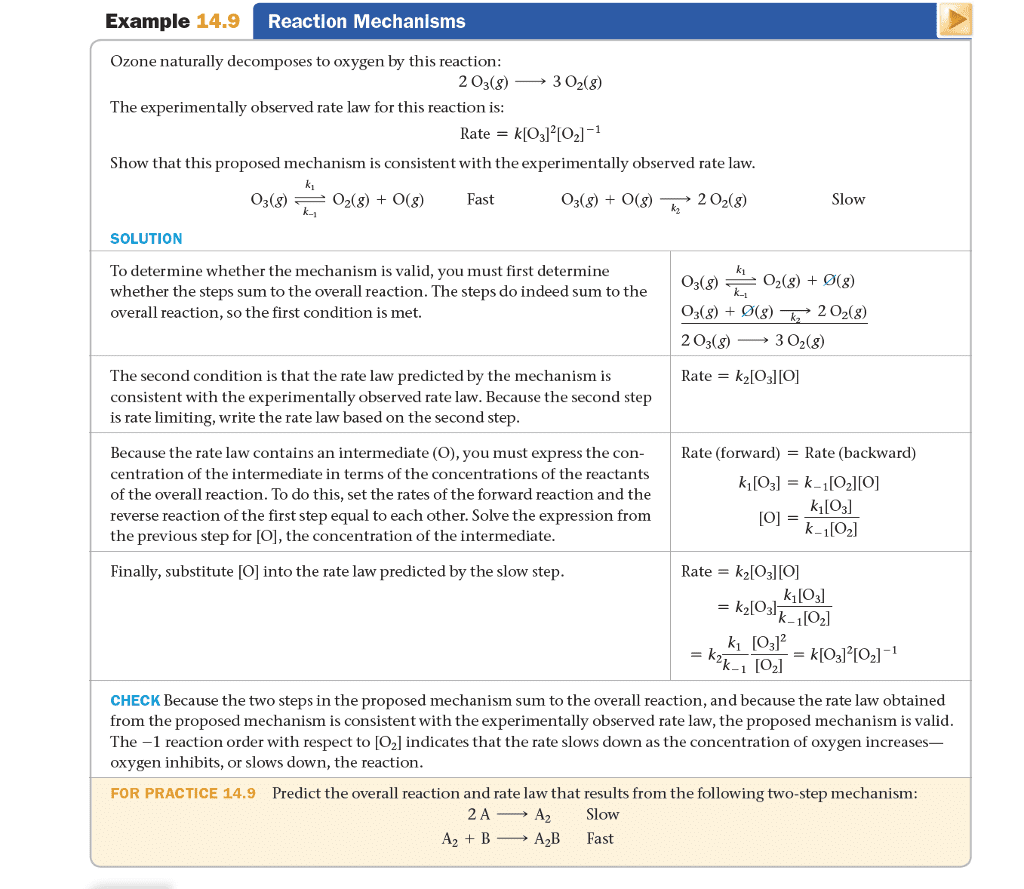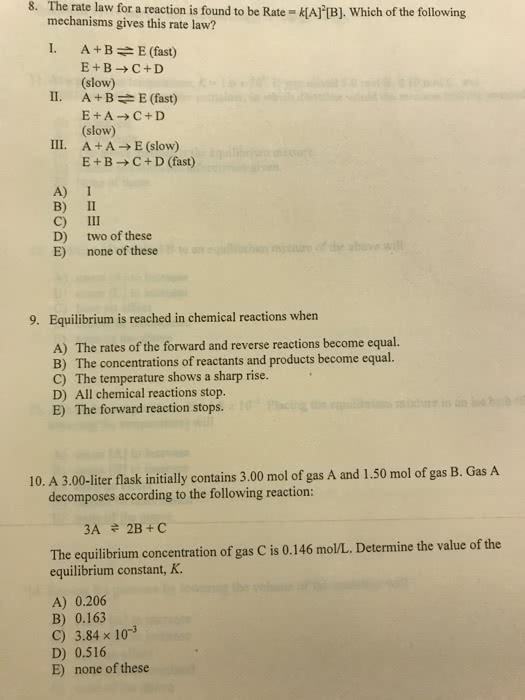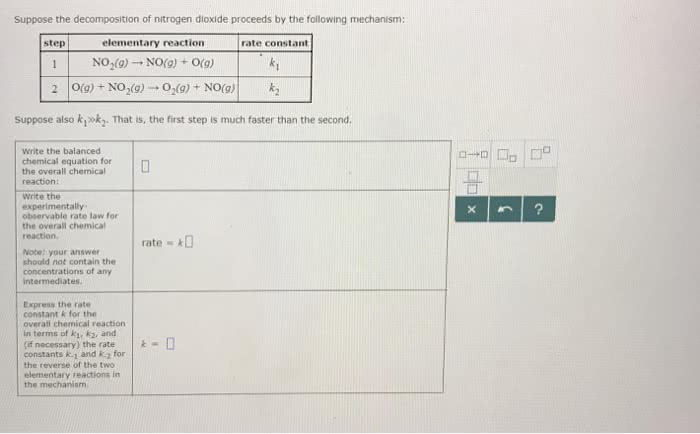CHEM 1032 Lecture Notes - Lecture 13: Equilibrium Constant, Rate Equation, Chemical Equation
Document Summary
Rate laws: determine experimentally or with reaction mechanisms hypothetically, they have to match each other, reaction mechanisms: Overall rate law = rate law step 2. Overall rate law = equilibrium substituted rate law step 2. Equilibrium: rate forward = rate backward: rates are equal, concentrations are not equal. In some reactions almost all of the reactants will form products before equilibrium is reached. In other reactions, you could form very little product before equilibrium is reached. Once equilibrium is reached, the concentrations become constant: forming it at the same rate i"m depleting it, producing and depleting rates are equal. Quantified in the equilibrium constant: aa + bb + cc + dd. K > > 1: numerator > denominator, forward reaction is favored over the backwards reaction, a lot of products will form before equilibrium is reached, h2(g) + br2(g) 2hbr(g)




